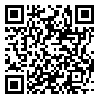Volume 4, Issue 1 (Journal OF Welding Science and Technology of Iran 2018)
JWSTI 2018, 4(1): 89-99 |
Back to browse issues page
1- Department of Materials - Welding Engineering, Bandarabas Branch, Islamic Azad University, Bandarabas, Iran
2- Department of Metallurgical and Materials Engineering, Yazd Branch, Islamic Azad University, Yazd, Iran
2- Department of Metallurgical and Materials Engineering, Yazd Branch, Islamic Azad University, Yazd, Iran
Abstract: (12353 Views)
In this research, two different filler metals, ERNiCrMo-3 and ER309L, were used for developing different microstructure, austenite (γ) and austenite and ferrite (γ+δ) in the weld metal and fatigue properties of welded samples were evaluated in the air and sea water environments. Microstructural studies indicated a good agreement between predicted microstructures via schiffler diagram and metallographic studies. Evaluation of fatigue properties in the air and sea water environments revealed the austenitic weld metal, like base metal microstructure, improved the fatigue strength of welded samples. Fractographic studies and FESEM-EDS analysis showed more ductile fracture of welded samples by using ERNiCrMo-3, formation of more uniform and deeper dimples in the final zone of fatigue fracture, than that of welded samples by using ER309L. Furthermore, unlike dimple formation centers in welded samples by using ER309L, Mo-Ti rich intermetallics caused formation of dimples in the welded sampled via ERNiCrMo-3.
| Rights and permissions | |
 |
This work is licensed under a Creative Commons Attribution-NonCommercial 4.0 International License. |


